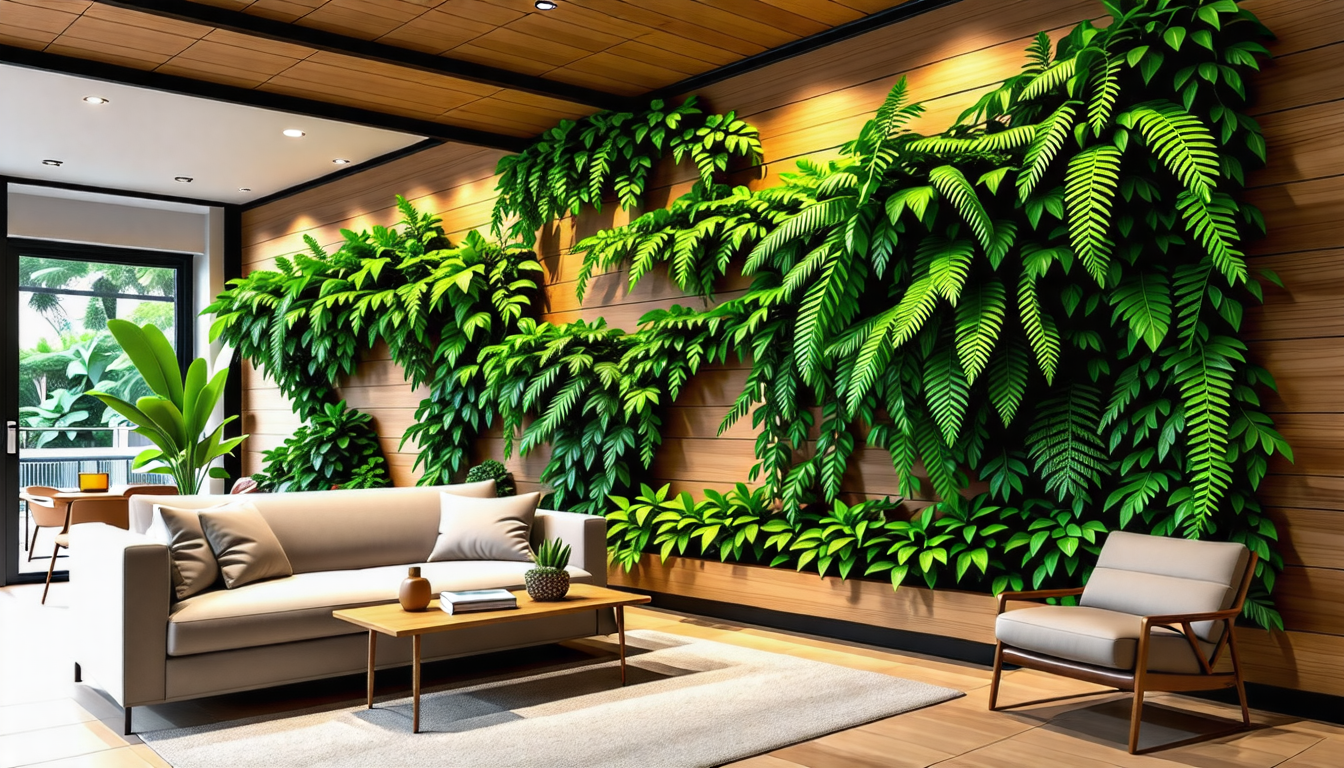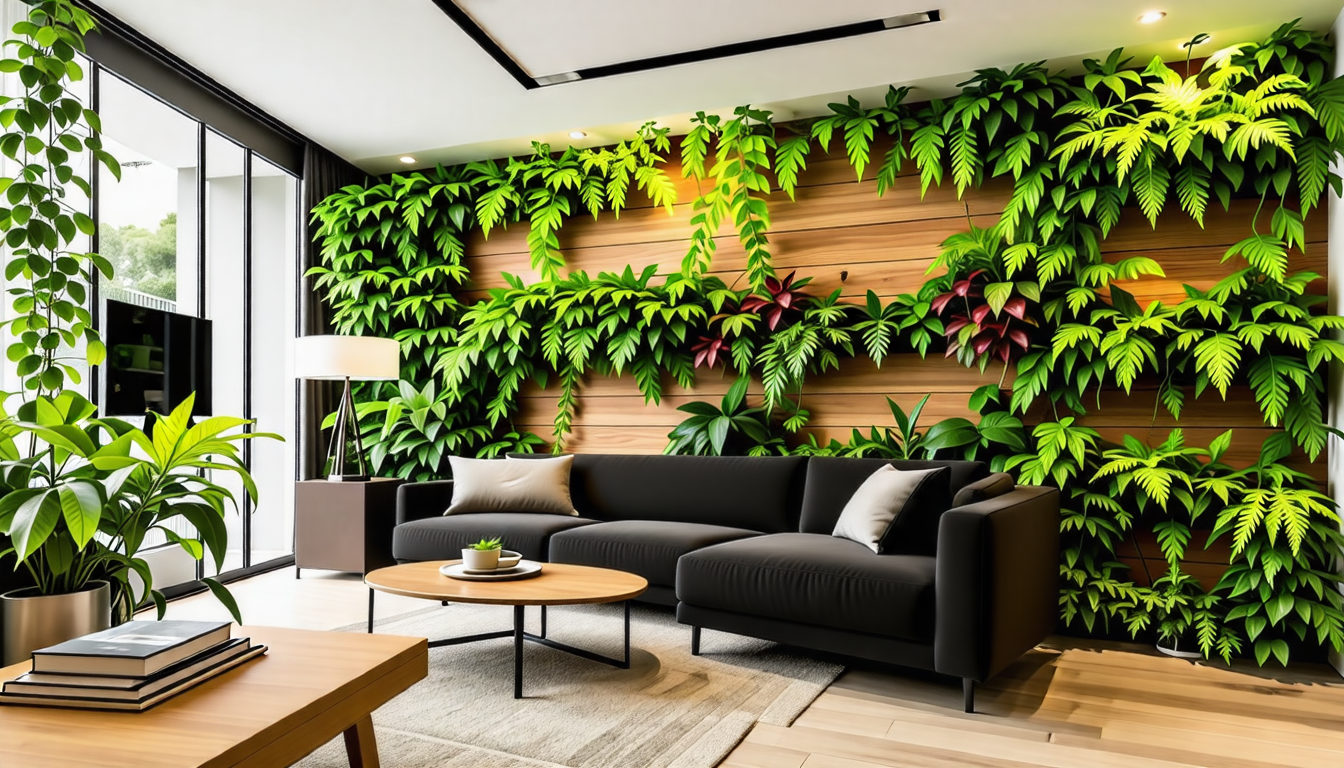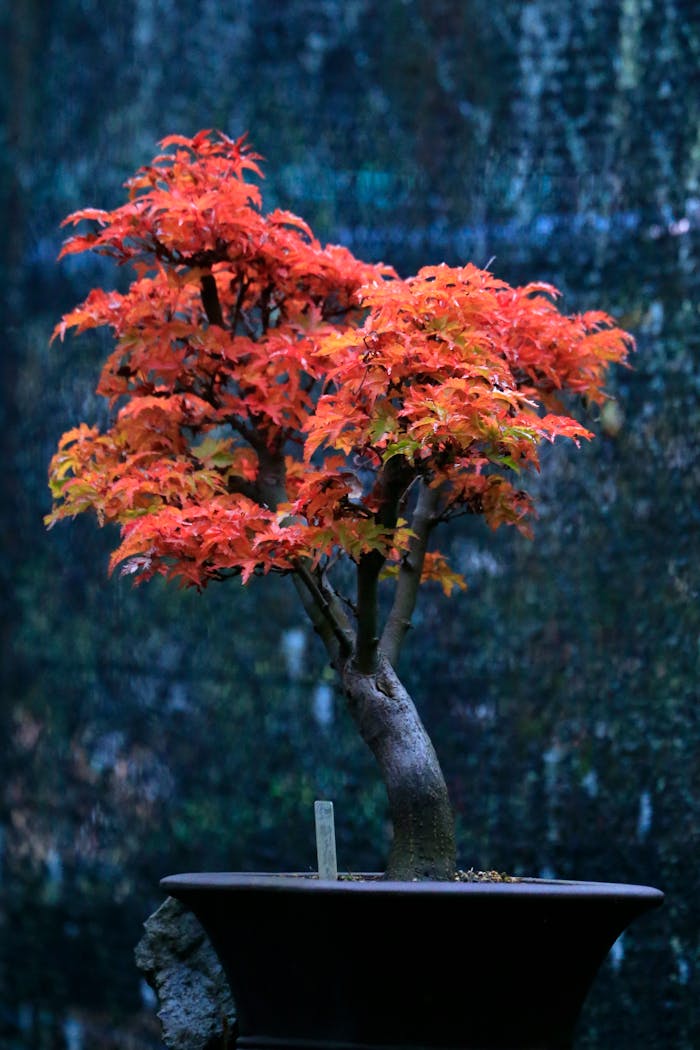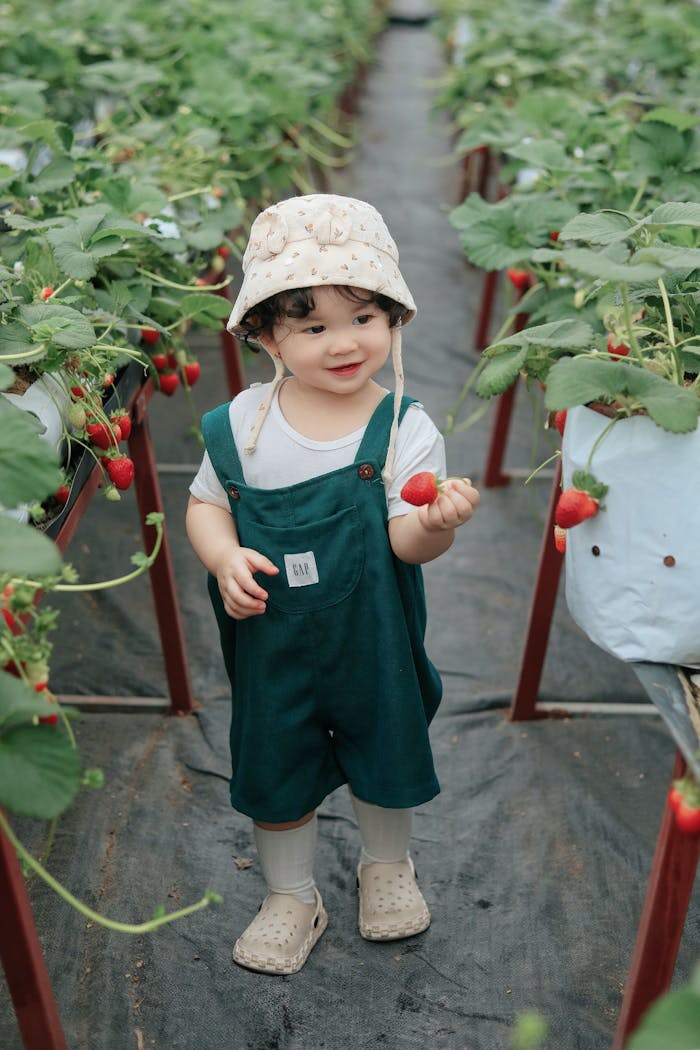|
IN BRIEF
|
Imagine transforming a dull wall into a breathtaking vertical garden that breathes life into your home. Creating a living wall not only enhances your space but also brings the refreshing essence of nature indoors. Whether you dream of cultivating vibrant herbs, eye-catching ornamental plants, or perhaps a stunning fusion of both, the possibilities are endless. In an age where urban living often means limited green space, a living wall serves as a splendid remedy. It’s a delightful blend of art and nature, inviting greenery into your everyday life while purifying the air around you. With a little creativity and planning, you can embark on the exciting journey of designing your own living wall sanctuary right at home, turning a simple wall into a thriving ecosystem.

Choosing the Right Location for Your Living Wall
The first step to creating a stunning living wall in your home is to identify the perfect location. Consider spaces that receive adequate natural light, as this will significantly influence the success of your plants. Areas near windows or in rooms with plenty of sunlight are ideal. However, if you’re leaning towards a darker space, don’t despair! There are many plants that thrive with minimal light.
Understand Light Requirements
It’s crucial to understand the light conditions of your chosen location. For instance, if you have direct sunlight, you might consider vibrant options like croton (Codiaeum variegatum), which flourishes in bright environments. On the other hand, if you’re selecting an area with low light, opt for shade-tolerant plants such as ferns or philodendrons.
Preparing Your Space
Once you’ve chosen the location, it’s time to prepare the area. Clear the space of any obstacles and ensure that you have a clean, stable surface to work on. If the wall is textured or painted a color that might interfere with the aesthetics of your living wall, consider covering it with a protective material.
Choosing the Right Surface
Your living wall can be mounted directly onto a wall or installed on a freestanding structure. Ensure that the surface is capable of holding the weight of the plants and soil. For example, living wall panels and self-watering living walls are excellent options, as they’re specifically designed to support various plant types.
Designing Your Living Wall
Now that your location is prepared, it’s time to get creative and design your living wall. Visualize how you want your plants to look; it’s important to consider the size, shape, and texture of the plants.
Frames and Planters
The framework is where your plants will be housed. You can choose from different styles of planters—vertical, modular, or even custom-built structures. Ensure that your containers are well-drained and appropriate for the type of plants you will be using. You might also explore living wall kits, which contain everything you need to get started.
Choosing the Right Plants
Your selection of plants will determine the overall aesthetic and functionality of your wall. Consider a mix of herbs, annuals, and perennials to bring variety to your design. Don’t limit yourself to ornamental plants; incorporating edible varieties like basil, mint, or strawberries can enhance your living wall’s appeal.
Color and Texture Harmony
When selecting plants, think about color schemes and textural contrast. Mixing leafy greens with vibrant flowers can create a stunning visual impact. Consider also using contrasting plant forms—tall plants can tower over shorter ones, adding depth and dimension to your wall.
Assembling Your Living Wall
With your design in mind, it’s time to assemble your living wall. Gather your tools and materials and prepare to bring your vision to life.
Setting Up the Frame
Start by securely mounting or setting up your frame. Ensure that it’s level and stable. If using a pre-purchased kit, follow the manufacturer’s instructions for installation. Once the frame is in place, it’s time to add the planting medium.
Planting Your Selection
Prepare the planting medium according to the needs of your chosen plants. Fill each container with the appropriate soil, ensuring that it’s loose and well-draining. Arrange your plants in a pleasing manner before securing them in their new homes. Make sure to give each plant enough space to grow and thrive.
Watering and Maintaining Your Living Wall
After planting, it’s crucial to establish a watering routine. Depending on the plants you choose, the needs may vary significantly. Newly planted walls often require frequent moisture, whereas established plants might thrive on a less frequent schedule. To simplify this, consider a self-watering system that can help maintain consistent moisture levels.
Maintaining Your Living Wall
With your living wall beautifully assembled, ongoing maintenance will be key to its long-term health and vibrancy. Regular care ensures that your wall flourishes and continues to be a source of joy in your home.
Watering Techniques
As previously mentioned, a self-watering system can take the guesswork out of irrigation. However, if you prefer manual watering, check the soil regularly to gauge moisture levels. A simple finger test—pressing your finger into the soil—can indicate whether it’s time to add water.
Pruning and Trimming
Over time, your plants will grow and may require pruning. Regularly check for overgrown areas and trim back excessive growth to maintain a tidy appearance. Pruning not only enhances the look but also promotes healthy growth by allowing sunlight to reach the innermost leaves.
Watch for Pests
As with any garden, keep an eye out for pests that may threaten your living wall. Inspect plants often for signs of infestations or diseases, such as yellowing leaves or webbing. Early detection can prevent larger issues down the line, and using organic pest control methods can help maintain a healthy environment.
Seasonal Adjustments and Seasonal Plants
Consider altering your plant selection with the seasons to keep your living wall dynamic. Some plants thrive in warmer months while others flourish in the colder season. Rotate seasonal plants for a constantly evolving wall that reflects nature’s cycles.
Selecting Seasonal Plants
For spring and summer, bright annuals like petunias can create vibrant bursts of color. In the fall, consider planting kale** or pansies, which not only maintain beauty but can also add some unique textures to your wall. Additionally, think about using perennial plants that can return year after year, providing a reliable backdrop.
Maximizing Your Green Space
You might be surprised at how a living wall can maximize the green space in your home. Beyond the visual appeal, a vertical garden can improve indoor air quality and contribute to a peaceful atmosphere.
Creating a Healthier Environment
Plants absorb carbon dioxide and release oxygen while filtering out toxins—this makes your living wall a healthy addition to your interior space. Choose plants known for their air-purifying properties, such as snake plants and peace lilies, which can create a serene environment while enhancing your decor.
Exploring Creative Ideas for Your Living Wall
A living wall doesn’t have to conform to traditional ideas. Get creative! There are myriad ways to personalize your vertical oasis.
Incorporating Art and Accessories
Why not add a few artistic touches to make your living wall even more engaging? Incorporate decorative frames, unique planters, or hanging elements to create a unique style. Art elements can be interspersed among the plants or as a backdrop to create a dual-functioning space that is both functional and aesthetically pleasing.
Vertical Hydroponic Systems
If you venture into more advanced gardening, consider implementing a vertical hydroponic system. This approach can provide your plants with nutrients and water without requiring traditional soil. Hydroponics allows for more precise control and can lead to faster growth, especially useful for herbs and vegetables.
Using Technology
Incorporating smart technology into your living wall can further simplify care. Employing sensors that monitor moisture levels or automated watering systems can keep your plants healthy with minimal effort. You’ll have more time to simply enjoy the beauty of your living wall.
Engaging Your Household in Plant Care
Creating a living wall can be a wonderful opportunity to involve your family or roommates in gardening. Nurturing plants brings people together and can enhance your home’s sense of community.
Gardening as a Shared Activity
Establish a routine that invites everyone to engage with the living wall. Assign tasks, such as watering or pruning, to different family members. This shared responsibility not only promotes teamwork but also fosters a deeper appreciation for nature and its upkeep within your home.
Educating about Plants
Encourage learning about the various plants in your living wall. Organize informal sessions where everyone discusses the specific needs and benefits of different species. This will enhance the experience and promote curiosity about plants and gardening in general.
Understanding the Concept of a Living Wall
Creating a living wall in your home is an innovative way to integrate nature into your living space. This vertical garden can enhance the aesthetic appeal while improving air quality. To start, it’s essential to identify a suitable location that receives ample natural light, as this will influence the types of plants you can utilize. For instance, varieties like croton thrive in bright environments, offering a vibrancy that can brighten any room. However, the choice of plants is not limited to just ornamental options; herbs, vegetables, and even succulents can be incorporated to create a functional and visually pleasing installation.
Steps to Designing Your Living Wall
Once the right location has been determined, the design phase begins. First, measure and mark the designated area to ensure the wall fits perfectly. This planning is crucial to avoid difficulties during installation. Next, select an appropriate frame or mounting system that can support the weight of the plants and their containers. Various living wall kits are available on the market that simplifies this process. The final step is choosing your plants; consider a mix of annuals and perennials to maintain visual interest throughout the year. As the famous botanist Patrick Blanc stated, “A living wall is a vertical garden where the walls are alive, full of life and beauty.” This sentiment embodies the essence of creating a living wall in your home, where nature meets design, creating a serene and refreshing atmosphere.

Creating a living wall in your home is a fantastic way to bring nature indoors, enhancing both aesthetics and air quality. Begin by finding the ideal location that receives ample natural light, as it dictates the type of plants you can use. After choosing your spot, prepare the surface—this could be a wall, a frame, or even containers. Don’t shy away from mixing ornamental plants with herbs and vegetables for a unique touch. Once you’ve selected your plants, ensure they fit well together and thrive in the same conditions. Following these easy steps, you’ll have a vibrant, self-sustaining piece of nature right in your living space, creating a calming and revitalizing atmosphere.
Frequently Asked Questions About Creating a Living Wall
What is a living wall? A living wall, also known as a green wall, is a vertical garden that consists of a variety of plants grown on a structure, either indoors or outdoors.
What are the benefits of a living wall? Living walls provide numerous benefits including improved air quality, enhanced aesthetics, and better insulation for your home. They also contribute to biodiversity and can reduce noise levels.
Which plants are best for a living wall indoors? If your indoor space receives direct sunlight, consider using croton (Codiaeum variegatum) among other ornamental plants to achieve a vibrant look.
How do I choose the right location for my living wall? It’s important to select a space that offers adequate light for your selected plants and allows for easy maintenance.
What materials do I need to create a living wall? You’ll need a suitable frame or planter system, potting soil, and a selection of plants that will thrive in your chosen location.
Can I include herbs or vegetables in my living wall? Absolutely! A living wall can be designed to accommodate a mixture of herbs, vegetables, annuals, and perennials, creating a functional as well as beautiful space.
How do I maintain my living wall? Regular watering, pruning, and monitoring for pests are essential to keep your living wall healthy and thriving.
Is a living wall expensive to create? The cost of creating a living wall can vary greatly depending on the size, choice of materials, and type of plants used, but there are options available for various budgets.
Can I create a living wall in a small space? Yes, living walls can be designed for small spaces, making them perfect for apartments, balconies, or tiny gardens.


